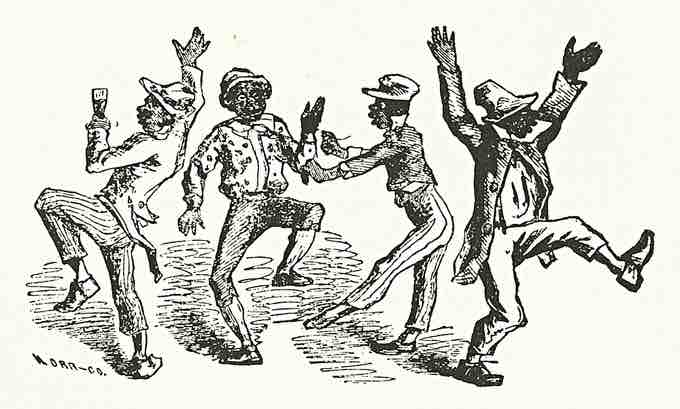Blackface Minstrelsy
Blackface minstrelsy was the first distinctly American theatrical form, influencing theater and popular music throughout the nineteenth century and well into the twentieth century. In the 1830s and 1840s, it was at the core of a growing American music industry. For several decades it provided the lens through which white America saw black America. On the one hand, it had strong racist overtones; on the other hand, it afforded white Americans a singular and broad awareness of what many considered to be African-American culture.
Minstrel shows originated in the early 1830s as brief burlesques with comic interludes and evolved into a national theatrical art form within the next decade, superseding less accessible genres such as opera for the general populace. The shows typically involved African instruments and dance and featured performers with their faces blackened—a technique called "blackface." One such popular routine was “Jump Jim Crow,” a song-and-dance routine portraying a caricature of an African American first performed in 1832 by white actor Thomas D. Rice. The routine’s popularity gave rise to the term “Jim Crow,” a pejorative used to describe African Americans that was co-opted in the 1890s to describe voting laws that enforced racial segregation throughout the South.
Music
Early American popular music consisted of sentimental parlor songs and minstrel-show music, some of which remains in rotation to this day. Popular composers of the era included Stephen Foster and Daniel Emmett. By the middle of the nineteenth century, touring companies had taken minstrel music not only to every part of the United States, but also to the United Kingdom, Western Europe, and even to Africa and Asia. Many minstrel songs and routines were depicted as authentically African American; however, this often was not the case.
Black people had taken part in American popular culture prior to the Civil War era. For instance, the African Grove Theatre in New York City founded in 1821 by freed black man William Alexander Brown was frequented by a large cross-section of black New York society prior to the abolition of slavery in that state. Additionally, Francis Johnson was the first black composer to publish music in 1818. Nonetheless, many of these important artistic advances were made to conform to the prevalent European stylings of the time without taking into account distinctly African cultural contributions.
Loss of Prosperity
By the turn of the twentieth century, the minstrel show enjoyed but a shadow of its former popularity, having been replaced for the most part by vaudeville. It survived as professional entertainment until about 1910, and amateur performances continued until the 1960s in high schools and local theaters. As African Americans began to make advances politically, legally, and socially against racism and prejudicial treatment, minstrelsy lost popularity.

Bryant's Minstrels
An illustration from the playbill for a minstrel show, highlighting singing and dancing by actors in blackface.